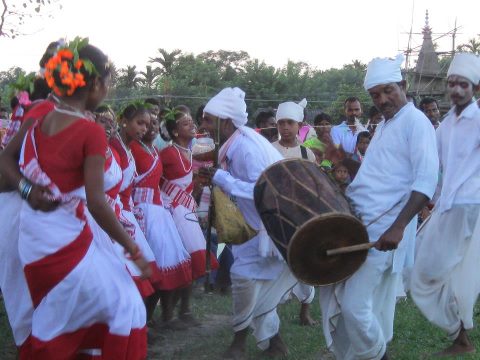Jhumur Dance
On February 24, 2025, Prime Minister Narendra Modi will attend the largest Jhumur event in history, celebrating the 200th anniversary of Assam’s tea industry. This event, named Jhumoir Binandini 2025, will take place in Guwahati’s Sarusajai Stadium. It aims to highlight the rich cultural heritage of the tea tribes and their contribution to Assam’s economy.
Tea Garden Community
- The tea garden community consists of diverse ethnic groups.
- They migrated from Central India in the 19th century to work in Assam’s tea gardens.
- This migration was often coerced and exploitative. Many workers faced harsh conditions and low wages.
- Despite these challenges, the descendants of these workers now form part of Assam’s population. They primarily reside in districts like Tinsukia, Dibrugarh, and Sivasagar.
- Although classified as Other Backward Classes (OBC), they continue to seek Scheduled Tribe (ST) status.
Historical Context of Jhumur Dance
- Jhumur dance originates from the Sadan ethnolinguistic group of the Chotanagpur region.
- It embodies the cultural practices brought by tea garden workers to Assam.
- The dance plays a vital role in tea garden festivals, particularly during Tushu Puja and Karam Puja, which celebrate harvest time.
- The dance has evolved to incorporate Assamese influences while retaining its unique characteristics.
Features of Jhumur Dance
Jhumur is predominantly performed by women, who sing while men accompany them on traditional instruments like madal and dhol. Dancers wear vibrant attire, with red and white sarees being popular among women. The dance involves coordinated movements and precise footwork, reflecting the community’s unity and cultural identity.
Thematic Elements of Jhumur Songs
The songs sung during Jhumur performances often depict the struggles of tea plantation workers. They narrate stories of migration and exploitation, denoting the community’s socio-economic challenges. This aspect of Jhumur serves as a medium for social cohesion, helping the tea tribes retain their cultural identity amid historical displacement.
Month: Current Affairs - February, 2025
Category: Art & Culture Current Affairs







